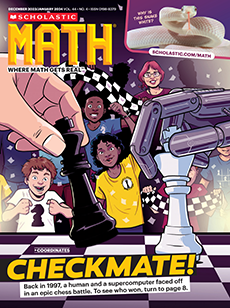Review fact families with students. Remind them that a fact family is a set of four equations that shows the relationship between three numbers. The equations include inverse operations, and they can be written using addition and subtraction or multiplication and division. Provide students with a few sets of three numbers and have them write the fact families for each (e.g., 12, 96, 8; 4.25, 6.05, –1.8). Then tell students that fact families are one way to help us understand the use of inverse operations for solving one-step equations.
CCSS: 6.EE.B.7, 6.EE.B.7, *7.EE.B.4.A, MP2, MP4, MP7
TEKS: 6.6.C, 6.9.A, 6.10, *7.10A
*Additional standards covered in Skill Builders.
